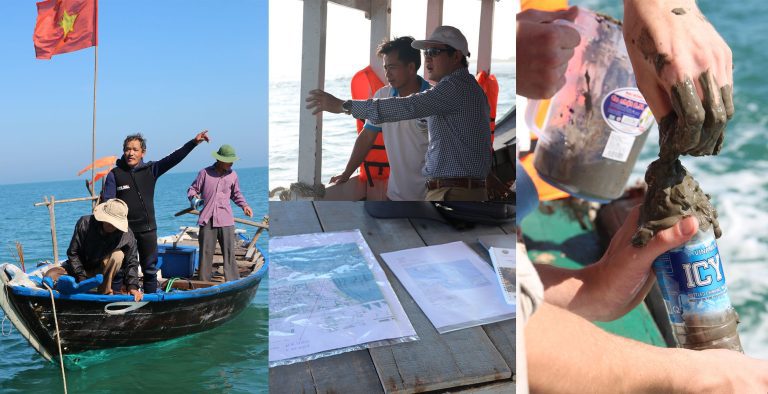After several weeks of analysis it is becoming more and more clear that beach nourishment will be one of the best, if not the only solution, to deal with the coastal erosion in Hoi An. But where to take this sand? Time for some fieldwork again!
Let me go to Mr. Tuấn. After living more than a month in Vietnam now, we know how to find just the right people for the job. That’s very easy when it comes to arranging the fieldwork and planning fun weekends.
Beach nourishment is not common practice in Vietnam. When taking away the causes of erosion is too difficult and will only create other problems, as it is in this case, hard structures as concrete sea dikes and vertical walls are often seen as a remedy. However, tourism is a major source of income for the community of Hoi An. And tourists want a beach.
But recreating the beach is easier said than done. One of the issues is where to get the sand. If sand can be dredged nearby Hoi An, it would make this option a lot more feasible, and that is why we went out on the sea to take some bottom samples. Accompanied by a seaman, management board member of the marine protected area and three local divers, we sailed out to get some sand. Well, at least we expected to find sand… When the diver reached the surface 10 kilometre offshore after his first 20 meter deep dive (without oxygen mask!) he held up a bag filled with black mud. The same went for the following three dives more close to the coast. Finally at 4 kilometers offshore we found the sand we were looking for. However, it is questionable whether sand can be dredged so close to the coast without interfering with the natural sand movements. By now the divers were getting tired and also limited by time we had to sail back to the harbour.
At the moment the samples are drying in the oven after which we can determine the sand grain size distributions. If this is comparable to the sand on the beach it would in theory we possible to use this for beach nourishment. If not, it is clear that the sand must come from elsewhere. Although that would not be the result we hoped for, it will still be a valuable outcome. And for our group member with sea sickness, it is good to know that the long six hours on the open sea were not worthless.



Comments are closed.